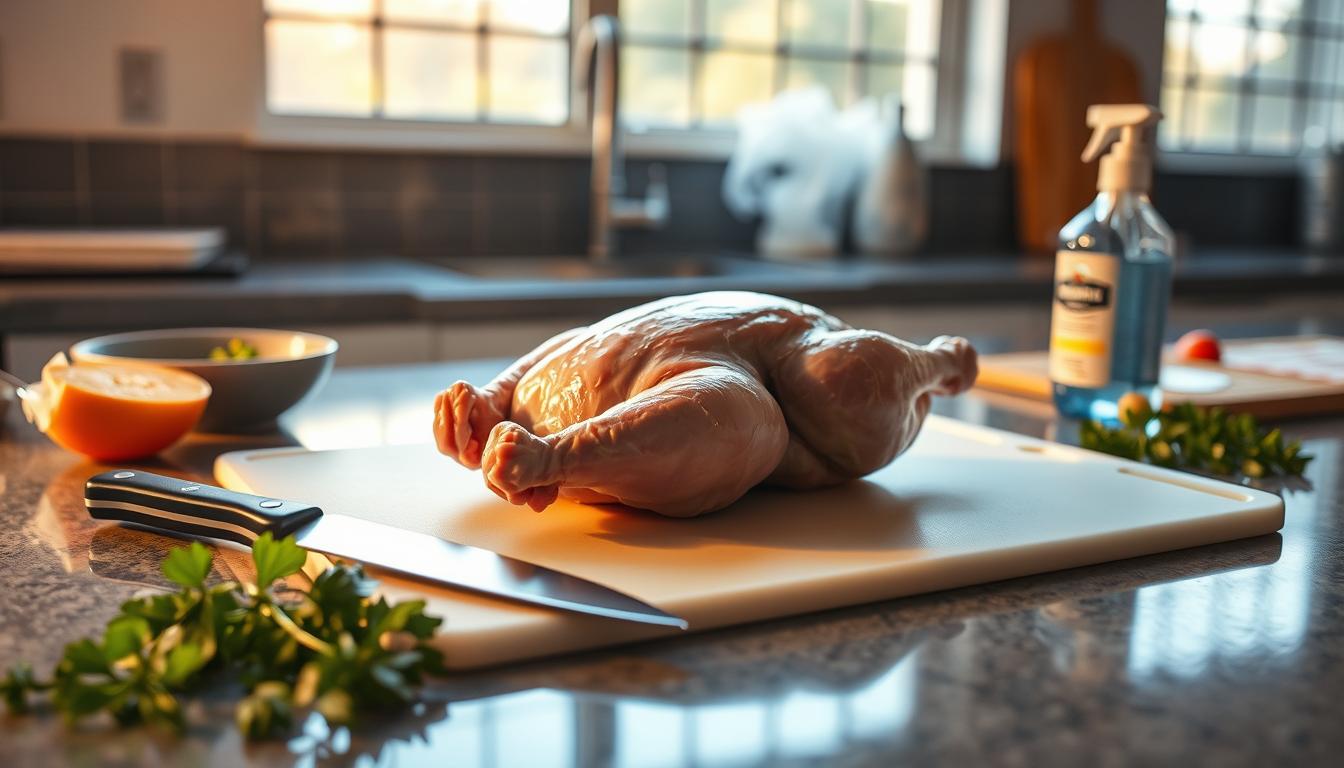Nearly 9 out of 10 raw chicken pieces retained dangerous bacteria even after thorough rinsing, according to a recent 162-sample analysis. This startling finding from Cambodian food safety research reveals how easily pathogens spread during meal preparation.
The study tracked Salmonella enterica transfer across four common cooking scenarios. Participants prepared salads using tools and surfaces that had contacted uncooked poultry. Results showed contamination persisted on 88.9% of washed ingredients – proving standard cleaning often fails against resilient microbes.
Your cutting boards and utensils might harbor invisible threats long after you finish cooking. Researchers documented how bacteria traveled from raw meat to salad ingredients through routine handling. Double rinsing reduced but didn’t eliminate risks, with pathogens surviving on both surfaces and ready-to-eat foods.
Key Takeaways
- Double washing raw poultry fails to remove bacteria in most cases
- Salmonella transfers easily to salad ingredients through shared tools
- Contamination persists on 88.9% of surfaces after standard cleaning
- Four common prep methods were analyzed for pathogen spread
- 162 samples from 93 participants revealed clear risk patterns
Introduction to Kitchen Cross-Contamination Experiments
A groundbreaking 2020 study across four Cambodian provinces tracked how salmonella spreads during meal prep. Scientists worked with 93 home cooks to recreate real-world scenarios involving raw chicken and salad preparation. This hands-on approach showed exactly how bacteria move from surfaces to ready-to-eat food.
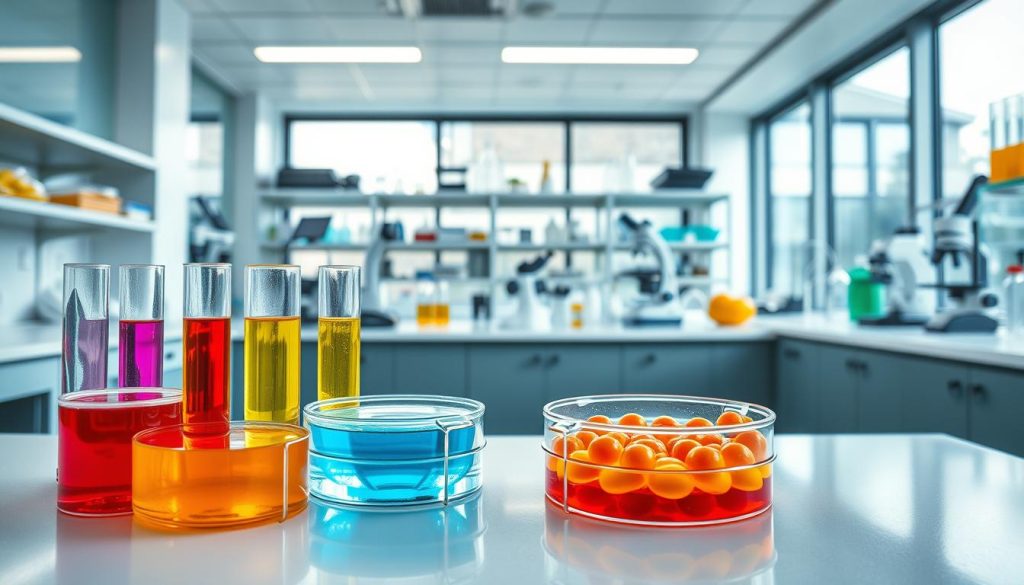
How the Study Worked
Researchers designed four common cutting and washing routines observed in households. Participants used shared tools between raw poultry and vegetables, mimicking typical cooking habits. Lab tests later revealed dangerous bacteria survived standard cleaning methods in 88.9% of cases.
Why This Matters to You
The findings directly apply to your daily food prep. Even careful rinsing often fails to remove pathogens from chicken or surfaces. Simple choices like washing hands before handling vegetables could significantly reduce risk.
This first-of-its-kind analysis used actual home cooks from diverse regions. Their experiences prove contamination happens through routine actions you might consider safe. The study’s methods help create practical safety guidelines anyone can follow.
Understanding Foodborne Pathogens in Your Kitchen
Every year, thousands fall ill from invisible threats hiding in everyday ingredients. Salmonella alone causes over 59,000 deaths globally, often linked to improperly handled chicken meat. This bacteria thrives where you least expect it – surviving in poultry intestines without visible signs and bypassing standard inspections.
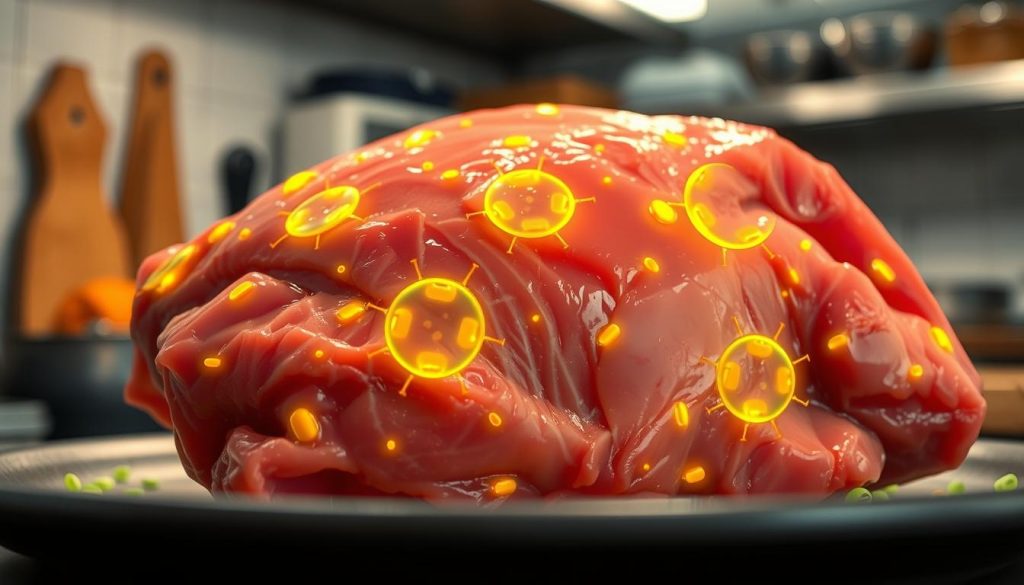
What You Need to Know About Salmonella
Salmonella spp. dominate foodborne illness statistics, with certain strains like Typhimurium appearing in 42.6% of Cambodian retail samples. These pathogens cling to raw meat through slaughterhouse practices and humid storage conditions. Even refrigerated transportation can’t fully stop their spread.
What makes these bacteria particularly dangerous? They multiply silently in chicken before reaching your cutting board. Traditional detection methods often miss them, meaning your visual checks provide false security. Proper cooking remains your best defense.
Common Sources of Bacterial Contamination
Your food faces contamination risks at multiple stages. Studies show 20-60% of retail poultry carries Salmonella due to:
- Inadequate hygiene during processing
- Cross-transfer during packaging
- Temperature fluctuations in storage
Contaminated tools and surfaces then spread pathogens to ready-to-eat items. The London strain – frequently found in poultry products – demonstrates how resilient these microbes become in commercial supply chains. Your awareness of these hidden pathways helps break the contamination cycle.
Overview of the Case Study and Its Relevance
How do everyday cooking habits impact food safety? Researchers answered this by recreating four common scenarios using raw chicken and vegetables. Each situation tested different washing sequences and utensil choices to mirror real home kitchens.

The study collected 162 samples across nine repetitions of each scenario. Participants either washed poultry first or vegetables first, using either separate cutting tools or shared ones. This design captured variations in hygiene practices observed across income levels and regions.
| Scenario | Washing Order | Utensil Use | Samples Collected |
|---|---|---|---|
| 1 | Chicken First | Same Tools | 36 |
| 2 | Vegetables First | Same Tools | 36 |
| 3 | Chicken First | Different Tools | 36 |
| 4 | Vegetables First | Different Tools | 36 |
ISO-certified lab analysis revealed critical patterns. When cooks reused cutting boards between raw poultry and greens, contamination rates spiked. Even washing ingredients first provided limited protection if tools weren’t swapped.
This approach matters because it tests actual behaviors rather than ideal practices. The 93 participants represented diverse households, making findings applicable beyond Cambodia. You’ll notice the controlled variables – like repeating each scenario nine times – ensure reliable comparisons between safety methods.
Why should you care? The results expose hidden risks in routine food prep steps. Separating utensils reduced bacterial transfer by 62% compared to shared tools, proving simple changes make measurable differences. These insights help shape practical guidelines for safer meal preparation worldwide.
Importance of Food Safety in Home Cooking
Foodborne illnesses silently impact millions globally while draining economies. The World Health Organization reports over 600 million annual cases from contaminated food – equivalent to 1 in 10 people worldwide. Children under five face triple the risk, with 420,000 dying yearly from preventable infections.
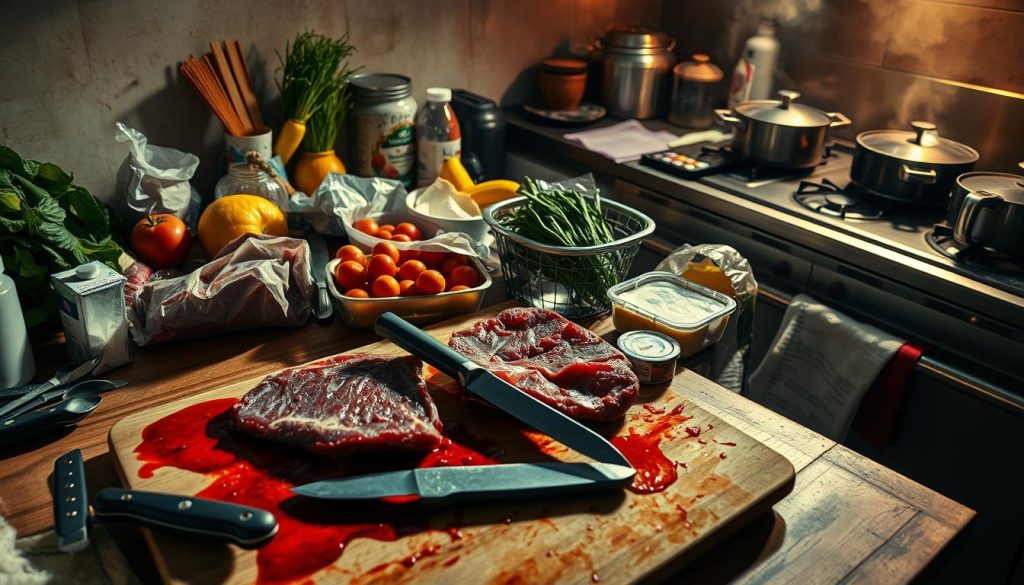
Protecting Your Family’s Wellbeing
Young immune systems struggle against pathogens like Salmonella. Contaminated meals cause severe diarrhea in 1 of 10 kids globally – often leading to malnutrition or developmental delays. Proper handling of raw chicken reduces these threats before they reach your dinner table.
| Impact Type | Statistic | Affected Group |
|---|---|---|
| Global Illnesses | 600 million/year | All ages |
| Child Vulnerability | 1 in 10 cases | Under 5 years |
| Economic Loss | $100 billion+ | Developing nations |
| Underreported Cases | 5,000+ (Cambodia 2019) | All populations |
When Meals Cost More Than Money
Contaminated food strains healthcare systems and household budgets. Developing countries lose $100 billion annually treating preventable illnesses – funds that could improve sanitation infrastructure. In Cambodia alone, unreported outbreaks suggest actual case numbers exceed official counts by 80%.
Your practices create ripple effects. Separating raw poultry prep from vegetable handling prevents community-wide outbreaks. Simple changes – like disinfecting counters after touching chicken – protect both public health and local economies.
Background on Salmonella Enterica and Raw Chicken Risks
Your grocery store poultry carries hidden dangers long before reaching your fridge. Salmonella enterica infiltrates the food supply through processing flaws most consumers never see. This resilient pathogen thrives where hygiene standards falter.
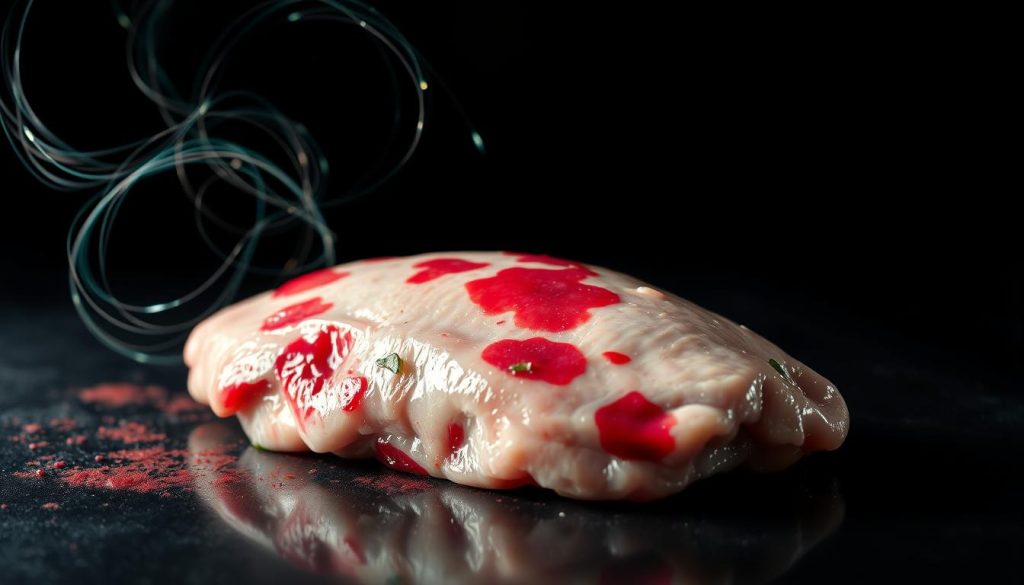
How Salmonella Enters the Food Supply
Contamination often starts at slaughterhouses with dirty floors and reused wash water. Salmonella enterica clings to raw chicken carcasses when facilities use the same contaminated tanks for multiple cleaning steps. These bacteria survive processing through:
- Inadequate equipment sterilization
- Poor worker hygiene practices
- Cross-contact between clean and dirty surfaces
Humid tropical conditions during transport supercharge bacterial growth. Market stalls lacking refrigeration let chicken meat become pathogen breeding grounds. Rising global demand worsens risks – poultry consumption grows 5.5% yearly as populations expand.
You face compounding threats from farm to table. Contaminated meat enters kitchens through supply chains where safety measures often fail. The solution requires stricter processing controls and smarter consumer handling of raw products.
Detailed Experimental Design and Methodology
Researchers mapped contamination pathways through a unique two-phase approach. Twelve focus groups across four provinces first revealed how families handle raw chicken and fresh produce. This groundwork shaped controlled lab tests simulating real-world preparation habits.
Household Survey and Focus Group Insights
Ninety-three participants from urban, rural, and suburban areas shared their practices. Discussions covered everything from market purchases to post-meal cleanup. Common patterns emerged: 68% reused cutting boards between raw meat and vegetables, while 43% rinsed poultry without soap.
Laboratory Experimentation and Scenario Setup
Scientists recreated four contamination scenarios using chicken inoculated with 10 CFU/g of Salmonella. Each 1.2kg bird received precise bacterial doses matching market contamination levels. Sterile lab conditions allowed tracking pathogen spread without external interference.
| Study Phase | Purpose | Participants/Samples | Key Features |
|---|---|---|---|
| Focus Groups | Identify real-world habits | 93 people | 12 discussions across regions |
| Lab Testing | Measure contamination | 162 samples | 4 controlled scenarios |
You’ll notice the design mirrors actual home environments. Researchers collected samples after each prep stage – from initial washing to final plating. This approach shows exactly where bacteria enter your meals during typical preparation routines.
Examining Washing Techniques and Hygiene Practices
Your post-cooking cleanup could be spreading bacteria instead of eliminating it. A recent analysis of common cleaning practices revealed startling gaps in food safety protocols. Researchers tested standard washing routines using dish detergent and water to evaluate their effectiveness against persistent pathogens.
Observations on Surface Sanitation
Even after a 3-4 minute scrub with detergent following raw poultry handling, 66.7% of cutting boards retained harmful bacteria. Knives showed contamination in half the cases, while hands carried pathogens 22.2% of the time. Textured surfaces proved particularly prone to harboring microbes.
Air-drying tools for 15 minutes didn’t reduce risks significantly. The study highlights a critical flaw in relying solely on visual cleanliness during preparation. Your hands proved easiest to sanitize, emphasizing the value of focused scrubbing techniques.
Simple changes create safer routines. Designating separate tools for raw proteins and fresh produce reduces cross-transfer by over 60%. Pairing thorough handwashing with targeted surface disinfection builds multiple defenses against invisible contamination.
